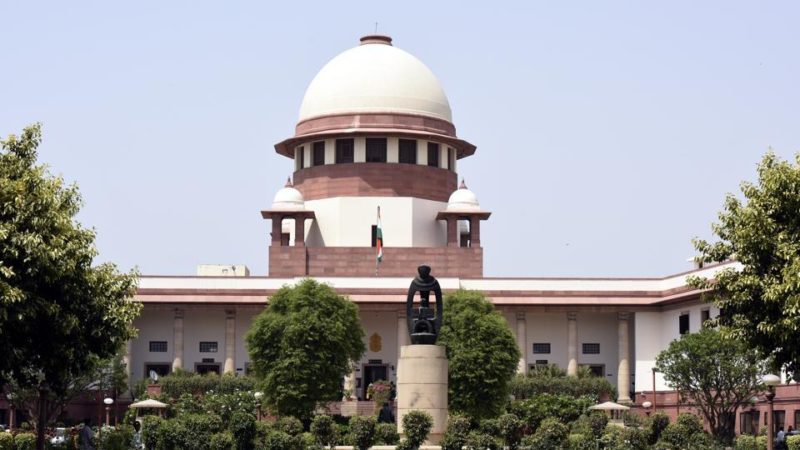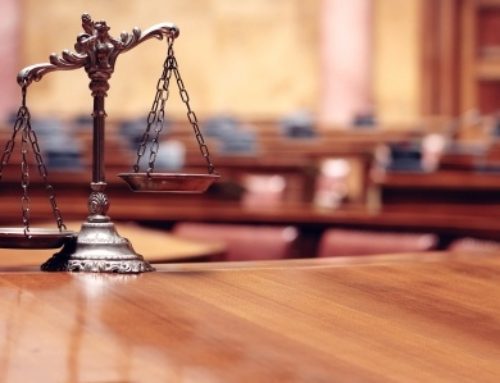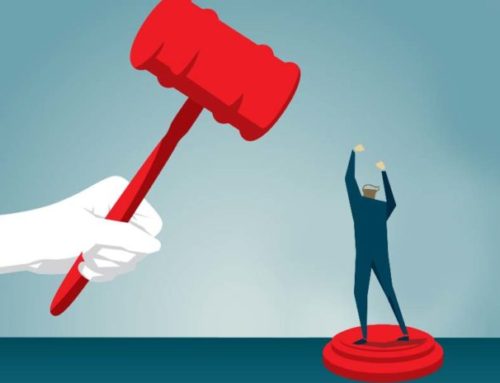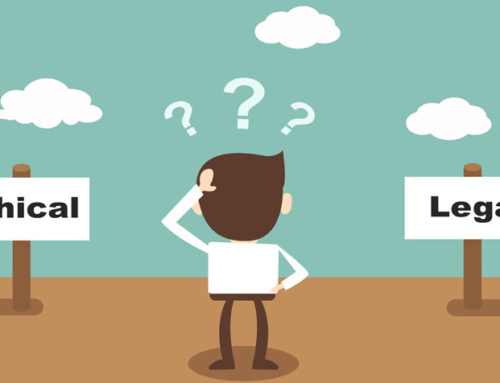The October of 2017 will be remembered as the one when the ‘sentinel qui vie’ of the Constitution of India delivered considerably on the front of reforming the legal profession: both bar and bench alike. The Supreme Court rose to the occasion and upheld the rule of law within the profession by giving effect to the twin principles of transparency and accountability. Two measures taken by it are pertinent to be noted in this regard. While the first instance (the internal passing of the resolution Re: Transparency in Collegium system) was that of reforming within proving how judges must have “broad shoulders” and in CJ Douglas’ words, be fortuitous enough to thrive in a hardy climate .
The latter and indeed more significant development came in the form of a judgment disposing of a batch of writ petitions filed regarding the malaise in the process concerning designation of senior advocates by the Supreme Court and various high courts. This post focuses on the reform in the process of designating senior counsels through a judgment in response to a movement spearheaded by Ms. Indira Jaising.
The judgment delivered by Justices Ranjan Gogoi, R.F. Nariman and Navin Sinha on the 12th October, 2017 took a strong note of “disrepute” that the current disparate and nebulous procedure of designating senior advocates had brought to the court and went on to issue certain “guidelines/norms” to remedy the same. The classification between Advocates and Senior Advocates is a statutory one which finds its positive basis in Section 16(1) of the Advocates Act, 1961. Section 16 (2) provides a conceptual criterion for making the designation, but very little guidance on the specific procedure that a court may adopt for this purpose:
“An advocate may, with his consent, be designated as senior advocate if the Supreme Court or a High Court is of opinion that by virtue of his ability [standing at the Bar or special knowledge or experience in law] he is deserving of such distinction.”
Gogoi J.’s observations on the state of the bar are pertinent insofar as the coveted pedestal on which the designation of a Senior Advocate places a professional:
“Legal practice in India, though a booming profession, success has come to a few select members of the profession, the vast majority of them being designated Senior Advocates….”
In a batch of petitions canvassed before the Court, the one moved by the Gujarat High Court Advocates’ Association[i] had in fact questioned the very constitutionality of classification envisaged by Section 16 (1) of the Advocates Act on the ground of it being violative of Article 14 (Right to Equality) of the Constitution of India. This is the first issue dealt with by the Court. It rightly refused to declare the impugned provision as unconstitutional. The Court reasoned that Section 16 (2) did provide the courts with some guidance on the exercise of their administrative power, and the mere possibility of misuse or abuse of it would not be a ground to declare it unconstitutional. It noted that “so long as the basis of the classification is founded on reasonable parameters which can be introduced by way of uniform guidelines/norms to be laid down by this Court, we do not see how the power of designation conferred by Section 16 of the Act can be said to be constitutionally impermissible.”
The Court seems to have given effect to the forward-looking and reformative stance adopted by Ms. Jaising. Gogoi J. notes how her petition assailed the process of designations while at the same time sought it to be “more objective, fair and transparent so as to give full effect to consideration of merit and ability, standing at the bar and specialized knowledge or exposure in any field of law.” In this regard, the Court holds that Section 16 (2) of the Advocates Act should be interpreted in a manner so as to uphold and give effect to “constitutional necessities” entailing fairness, transparency and reasonableness. It observes:
“The sole yardstick by which we propose to introduce a set of guidelines to govern the matter is the need for maximum objectivity in the process so as to ensure that it is only and only the most deserving and the very best who would be bestowed the honour and dignity. The credentials of every advocate who seeks to be designated as a Senior Advocate or whom the Full Court suo motu decides to confer the honour must be subject to an utmost strict process of scrutiny leaving no scope for any doubt or dissatisfaction in the matter.”
This I contend becomes the foundational bedrock on which guidelines issued by the Court stand. Two things stand out. First, the Court largely broke away from orthodox requirements such as income and as qualifying parameters of designation. Drawing upon how the legal profession is a form of social service, the court ruled that there was no rationale behind keeping a minimum income as a condition precedent for eligibility of becoming a senior counsel. It noted:
“The income generated by a lawyer would depend on the field of his practice and it is possible that a lawyer doing pro bono work or who specializes in a particular field may generate a lower return of income than his counterpart who may be working in another field of law. Insistence on any particular income, therefore, may be a self-defeating exercise.”
Second, the Court engaged in a very reasoned and balanced articulation of objectivity. Its analysis of making the process objectively assessable is finely grounded in its realistic observation of how subjectivity is inevitable. The Court stopped short of portraying its guidelines as the perfect solution. Its following observation is a sign of how well it understood the tensions that will continue to fraught the envisioned process:
“It is a subjective exercise that is to be performed by the Full Court inasmuch as a person affected by the refusal of such designation is not heard; nor are reasons recorded either for conferring the designation or refusing the same. But the opinion, though subjective, has to be founded on objective materials.”
It was to take these ideas forward that the Court laid down an elaborate set of norms and guidelines. These apply not only to itself (the Supreme Court) but to all high courts. First, it ordered the setting up of a permanent “Committee for Designation of Senior Advocates” at both the apex court and at all high courts, composed of the following:
- Chief Justice of India, and
- Two senior-most Judges of the Supreme Court of India (or High Court(s), as may be),
- The Attorney-General for India (or Advocate General of the State(s) in case of a High Court).
- Another member from the bar nominated by the above four members.
Second, it ordered the constitution of a secretariat for all such permanent committees which will “compile the relevant data and information” pertaining to candidates who apply or are nominated for the designation. Third, it ordered the publication of proposals for designation on the official website of the concerned court noticing and inviting suggestions or comments from the general public. Fourth, the appropriate Permanent Committee would then examine each candidate in the light of the data provided by the Secretariat and interview such candidate Advocate. The assessment by the permanent committee will then happen on a four-pronged evaluation criterion worth a hundred points:
| Sr. No. | Ground | Maximum Points |
| 1. | Practice: Number of years of practice of the Applicant Advocate from the date of enrolment. [10 points for 10-20 years of practice; 20 points for practice beyond 20 years] | 20 |
| 2. | Legal Caliber: Judgments (Reported and unreported) which indicate the:
|
40 |
| 3. | Intellect and Social Engagement: Publications by the Applicant Advocate | 15 |
| 4. | Personality: Test of Personality & Suitability on the basis of interview/interaction | 20 |
Fifth, the final say will still rest with the Full-Court which may (in exceptional circumstances) resort to secret-ballot voting. This is another manifestation of the Court’s majorly realistic stance which finally faces the reader of the judgment when it observes:
“We are not oblivious of the fact that the guidelines enumerated above may not be exhaustive of the matter and may require reconsideration by suitable additions/deletions in the light of the experience to be gained over a period of time. This is a course of action that we leave open for consideration by this Court at such point of time that the same becomes necessary.”
The Court however, (either deliberately or as a matter of lapse) seems to have missed an observation of the diversity and representative nature of designating process. An article on the Lawyers’ Collective (spearheaded by Ms. Jaising) makes the point as follows:
“Between 2000-2015, the Supreme Court has only designated one advocate belonging to the Dalit community, none from the disabled category, similarly minority communities and women have been discriminated against, there also exists regional discrimination in as much as no advocates have been designated from backward states such as Chhattisgarh, Jharkhand or Bihar.”
Accordingly, she had argued how the pre-judgment process of designations was “contrary to the notions of diversity violating Articles 14, 15 and 21” of the Constitution. How this has to be interpreted is a matter of perspective. That the Court fell into its island of exclusivity and did not even think about the caste-based lack of representation in the upper echelons of the bar could be an unfair conclusion. While we should criticize the Court for what it did not do, we must be able to also see through what it actually did. Its stress on procedural fairness and objectivity along with the element of self-doubt in coming to terms with the ever-subjective nature of designations, informs us that the Court did make a substantial leap in terms of providing clear and crisp guidance to the hitherto unguided process of designating senior counsels. It may suffice to point out that its emphasis on procedural fairness and objectivity as working standards could well in time cultivate substantive fairness implying inclusivity into the process of designating advocates as seniors.
An example from the the United Kingdom would substantiate the point where the body of lawyers analogous to Senior Advocates is constituted by the Queen’s Counsels (QC). The system of designating QCs (by a body called Queen’s Counsel Selection Panel) was reformed and reconfigured in 2005 to imbibe a higher degree of transparency and objectivity where the assessors are now required to judge the applications on grounds such as “Understanding and Using the Law, Written and Oral Advocacy, Working with others, Diversity, and Integrity.” A crucial element of this process is the chairing of the Selection Panel by a lay (non-law) person. The process there also underscores the importance of diversity in designations from quarters such as “women, LGBTQ community, other ethnicities [and] persons with disabilities.” Perhaps it is only a matter of time that the procedural foundation laid down by the Court now will enable a better substantive criterion to flourish and prosper.
As Holmes said “the life of the law has not been logic; it has been experience.” This is even truer of the legal profession. Hence, while the system has not been completely overhauled through tumultuous tides, the winds of change have begun blowing in the right direction. Regardless, it must be observed in operation before further comment.
Abhijeet Singh Rawaley is a BCI Scholar and third-year B.A.,LL.B. (Hons.) Candidate at NALSAR.








Leave A Comment